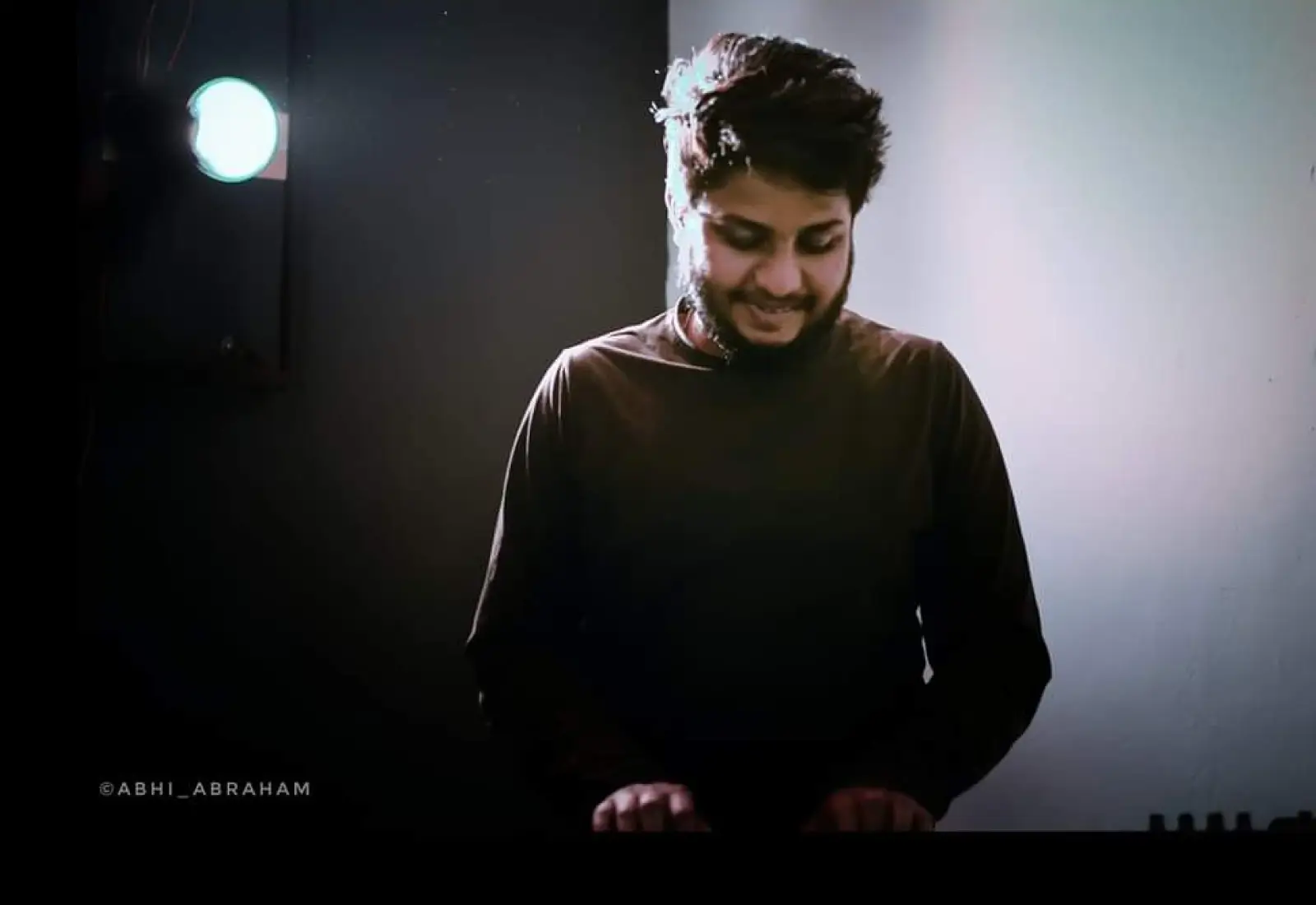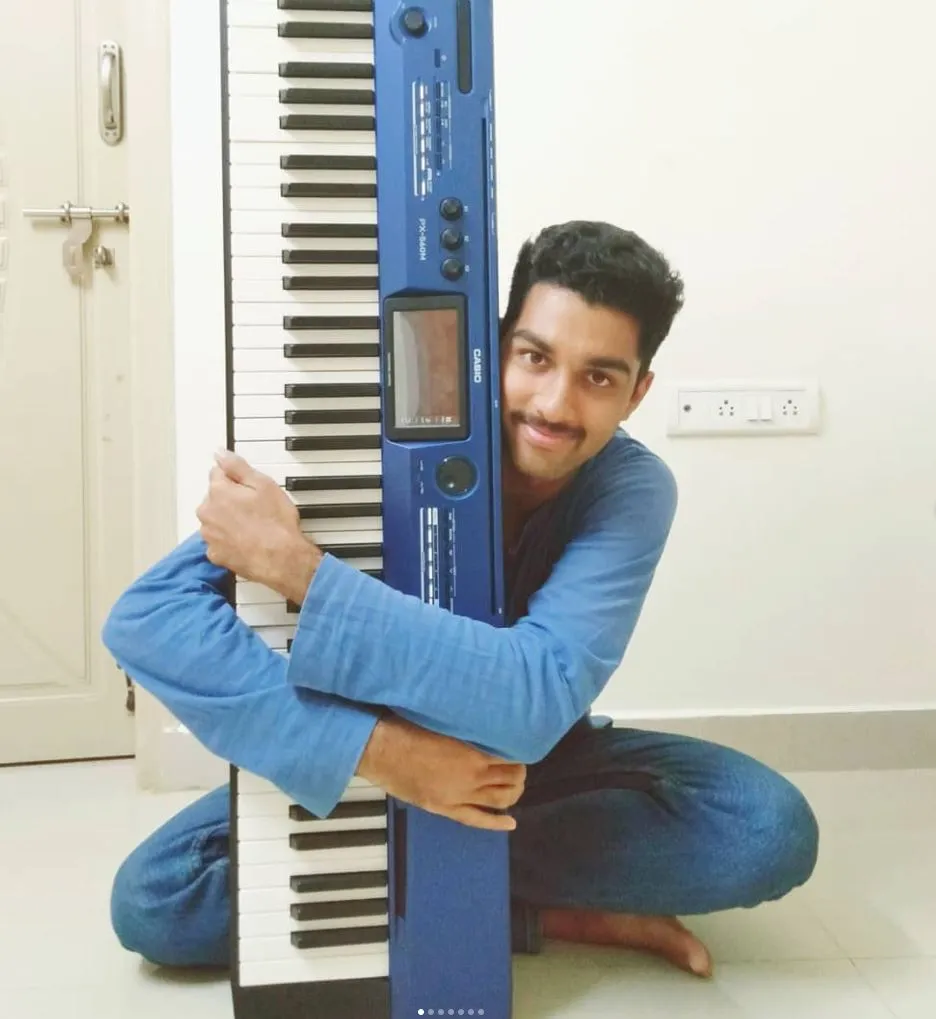Overview
By the look of it, a piano appears to be a large wooden structure stationed at a place. It looks glorious and enigmatic with the linear arrangement of 88 black and white keys, the hinged fallboard kept open while playing the piano, various other details, and a chair for the pianist to sit and play the instrument. A piano also features a soundboard and internal strings.
The stretch of the keys from one end to the other has white and black keys arranged following a distinct pattern and alternating sequence. There are 52 white keys and 36 black keys. The white keys represent the notes - C, D, E, F, G, A, and B.
The black keys are used to alter pitches for the seven notes. They are represented with special signs and symbols such as # and b following the main notes. These are referred to as accidentals in musical terminology.
With 88 keys in total, a piano houses 7 octaves covering a wide range of musical pitches. Each octave has seven white keys for the natural notes and five black keys for the chromatic notes.
The repetition of patterns in the linear pattern forms a visual consistency and helps the pianists differentiate between the pitches across the seven octaves.
The piano has always been a staple in the music industry for music educators, arrangers, composers, and performers on stage, and also in the recording studio.
Its versatility across an expansive range of octaves and ability to play melodies with equal competency as harmonies make it a favorite among diverse musical genres such as pop, rock, and jazz among others.
Origin and Evolution
The origin of the piano takes us back in time when keyboards were invented. Pipe organs - one of the most prevalent musical instruments since ancient European civilization became the basis of developing the keyboard mechanism during the Middle Ages.
The pipe organs had an elaborate mechanism that used pipes, bellows, and keys to create sounds. The keys were primarily hand-operated or through a primitive keyboard mechanism.
Throughout the entire medieval period and Renaissance, the organ pipes went through a lot of changes. The introduction of sliders and trackers to control the opening and closing of the pipes and thereby regulate airflow - was one of the notable innovations.
Experiments with string instruments were also in full swing during the same time. The very first mention in this regard features a single-string instrument with its string struck to a hammered dulcimer.
During the same time frame, several experiments were being carried out to give shape to a keyboard mechanism that featured struck strings. Around the 17th century, the clavichord and harpsichord came into being.
Clavichords
Most prevalent during the Renaissance and the Baroque periods, clavichords featured a rectangular structure. The keys and string arrangements resembled somewhat like that of the piano. When the key was pressed a tangent hit the strings and made it vibrate. The tangent remained attached to the string for as long as the key was pressed.
Harpsichords
The mechanism to pluck the strings while playing the keys came in with the harpsichords. Also as opposed to the clavichords, the volume could not be controlled by just pressing the keys. It remained constant. Harpsichords were used mostly during the Baroque era and continued till the Classical period.
Further developments and experiments - coordinating the keyboards to the sound-making strings, and other structural parts of the instrument carried on giving way to an instrument named the fortepiano.
Fortepiano
The fortepiano was invented in the year 1700 by Italian Harpsichord maker - Bartolomeo Christofori.
As opposed to the harpsichord which had plucked strings, the fortepiano featured strings that were struck. Christofori introduced leather-covered hammers that allowed for a dynamic range of sound. It also facilitated the functionality of controlling the volume through the keys.
The innovation of the hammer mechanism proved to be a brilliant advancement that impacted the timbre to a large extent. The fortepiano was lucky to be a part of the practice regime of musical stalwarts such as Mozart and Beethoven. It is considered to be the closest predecessor of the modern piano.
Modern Piano
With continued inputs and innovations from various instrument makers from Viennese, Germany - such as Johann Andreas Stein, Nannette Streicher (daughter of Stein), and Anton Walter, the instrument continued to evolve.
Between 1790 - 1860, the piano went through several structural changes. The key changes included - wires replacing the strings, the number of octaves extending from five to seven, and the creation of larger structures that replicated the earlier harpsichords.
The addition of octaves were added gradually between 1790-1820. The innovators behind this were - an English maker by the name of John Broadwood, a Dutch - Americus Backers, and a Scot - Robert Stodart.
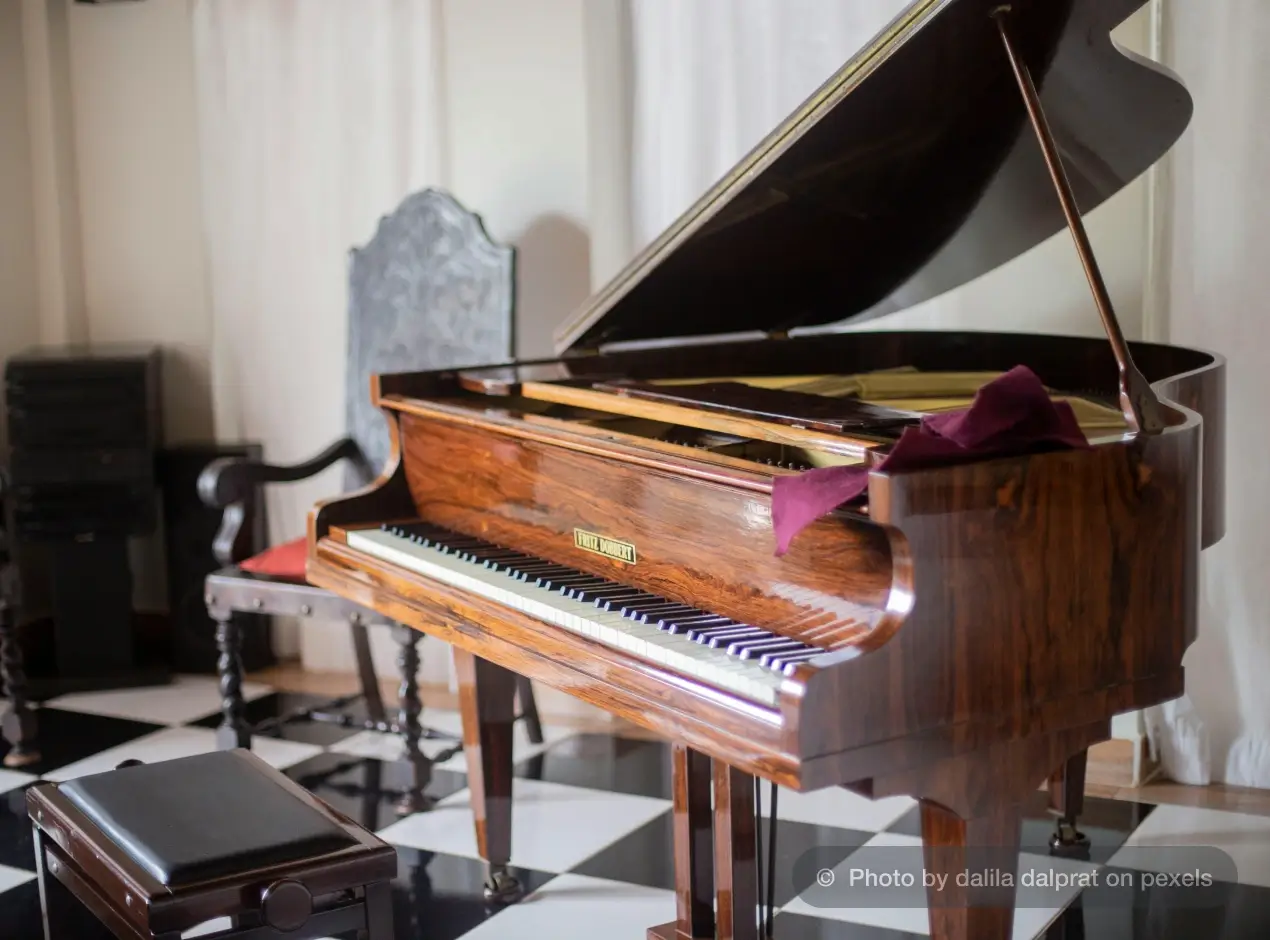
Further innovations such as balanciers, felt, foot pedals or sostenuto pedals, the introduction of a cast iron plate on the top of the soundboard, alteration in the way the instrument was strung, changes in shapes and arrangements of key components - gradually unfolded the arrival of the Grand Piano.
Types of Pianos
1. Grand Pianos
Grand pianos are characterized by their distinctive horizontal, wing-shaped design. They are available in various sizes, ranging - Baby Grands (1.5 m), Parlor Grands (1.7 to 2.2 m) to Concert Grands (22 to 3 m). The size influences the instrument's tonal characteristics and volume.
Grand pianos feature a large soundboard and have a horizontal design that allows for longer strings and a more significant soundboard area, contributing to a richer and more resonant tone.
The position of the lid also influences the sound quality of grand pianos. It provides maximum resonance when kept fully open and the sound is more intimate when it is closed.
Grand pianos have a sophisticated action mechanism that allows for faster repetition of notes and greater control over dynamics. This mechanism is crucial for pianists who require precision and expressiveness in their playing.
Grand pianos, for their elegant structure, is a prized possession and a mark of status. The skill and precision that go behind the exquisite artistry and detailed mechanism render a marvelous musical experience for the pianist and the listeners alike.
2. Upright Pianos
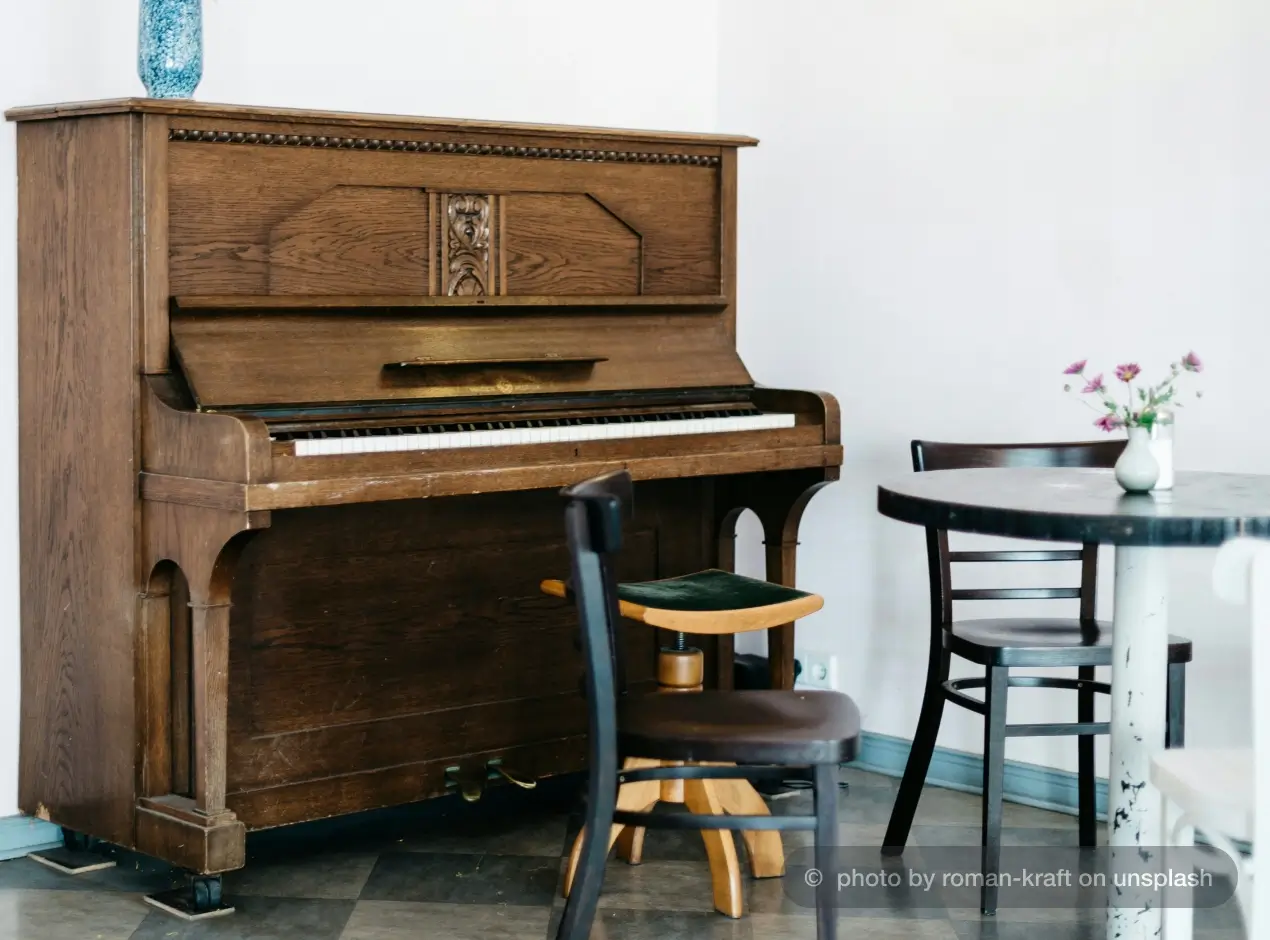
Upright pianos or vertical pianos are concise with their parts arranged up and down instead of horizontally. It is characterized by a mechanical action structure, designed by Robert Wornum in London in 1826.
Upright pianos take up less space than grand pianos, making them a good size for homes. They are also commonly used in churches, community centers, schools, music conservatories, and university music programs for practice and rehearsals.
There are different types of upright pianos categorized based on their size -
a) Spinet Model
b) Console Pianos
c) Studio Pianos
Technically, any piano with a vertically oriented soundboard can be called an upright, but the term is often reserved for full-size models.
3. Digital Piano
With the advent of technology, such digital instruments came into being that neither have the hammer nor the strings. A great deal of structural detailing of the acoustic piano is done away with. The digital audio sampling technology helps to recreate the sound of a piano. The volume can be enhanced by attaching an amplifier or through built-in speakers.
Digital pianos feature sustain pedals and keys that feel heavy or semi-heavy. They have multiple voice options that can imitate a violin or Hammond organs. They can also connect to other electronic instruments or devices through MIDI interfaces.
Earlier versions did not have pedals while some recent ones like the Yamaha Clavinova series have them to make it sound more realistic.
Piano - Parts and Mechanism
The big structure of the piano that we see can be divided into six main parts that help to create the sound and several other parts that support the main parts.
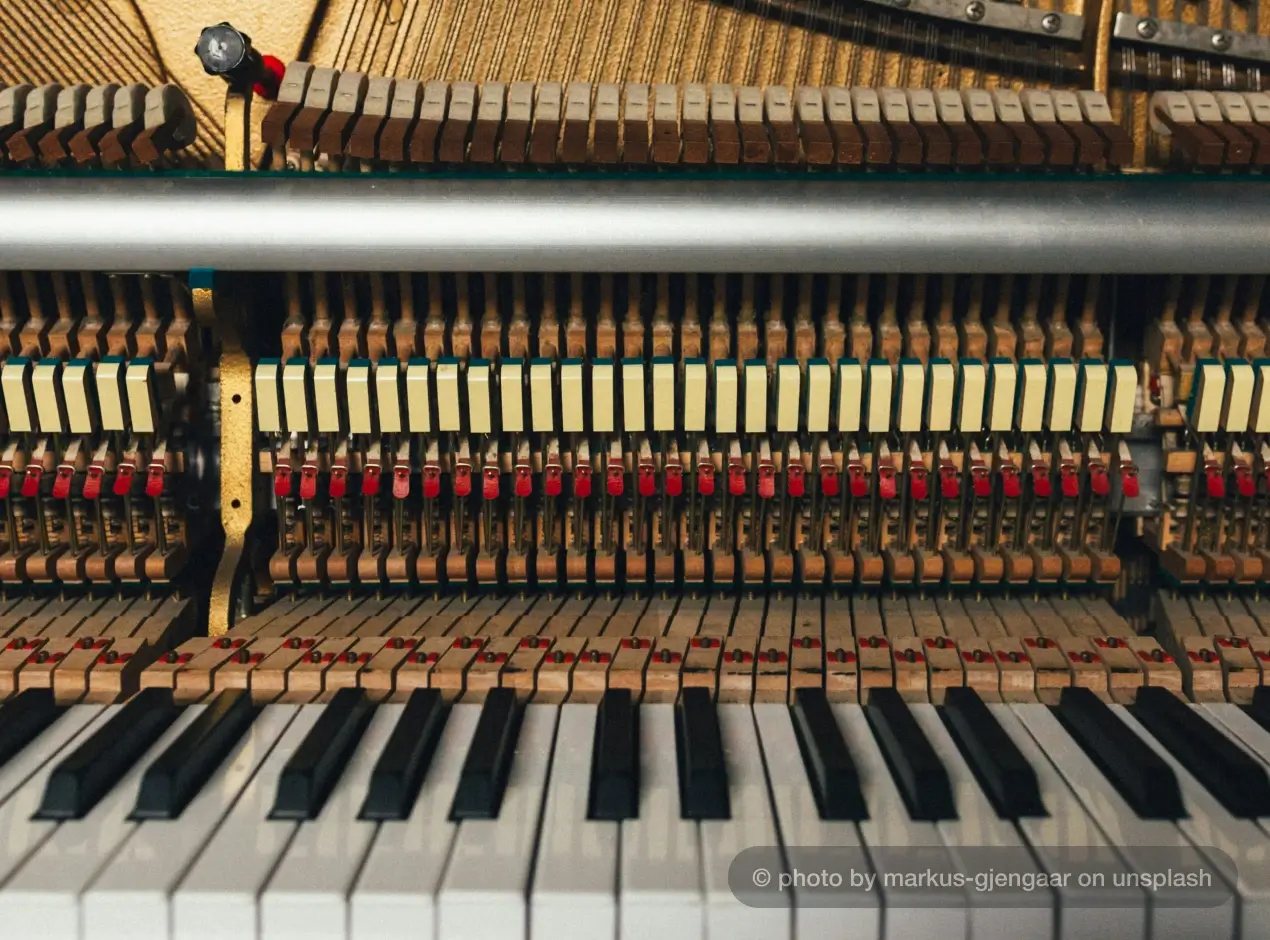
Understanding these components provides insight into the intricate mechanics and construction of a piano, contributing to the instrument's ability to produce a wide range of expressive and dynamic musical sounds.
First, let’s take a look at the main parts.
Keyboard
The keyboard is the set of keys that a pianist plays to produce sounds on the piano. It typically consists of 88 keys, with each key corresponding to a specific musical note. The keys are arranged in a repeating pattern of white and black keys, representing natural and sharp/flat notes. The keys cover a total of seven octaves.
The materials used for the keys include basswood, spruce wood, and ivorite ( a plastic substitute for ivory).
Hammers
Hammers are small, felt-covered wooden objects connected to the keys. When a key is pressed, the corresponding hammer is lifted, and it strikes the strings inside the piano to produce sound. The force with which the hammer strikes the strings is determined by the speed and pressure applied to the key.
Dampers
Dampers are felt-covered devices connected to the piano's damper mechanism. When a key is released, the damper lifts off the strings, allowing them to vibrate freely and produce sound. Pressing the sustain pedal keeps the dampers raised, allowing for a continuous sound even after releasing the keys.
Bridge
The bridge is a wooden component located on the soundboard, serving as a support structure for the strings. It transmits the vibrations from the strings to the soundboard, enhancing the resonance and projection of the sound produced by the piano.
Soundboard
The soundboard is a large, thin wooden board positioned horizontally beneath the strings. Its primary function is to amplify and project the vibrations generated by the strings when struck by the hammers. The soundboard is a crucial element in shaping the piano's overall tone and volume.
Strings
The strings are tightly stretched wires running horizontally across the piano. When a key is pressed, the corresponding hammer strikes the strings, causing them to vibrate and produce sound. The thickness, length, and tension of the strings contribute to the unique tonal characteristics of each note.
Other Supporting Parts
There might be thousands of small parts that support the key components. But listed here are the most essential ones -
Frame
The frame, also known as the plate or harp, is a large cast-iron structure that provides structural support to the piano. It holds the tension of the strings and plays a crucial role in transmitting vibrations to enhance the sound.
Lid, Front Part
The front part of the lid is the hinged cover that protects the keyboard when the piano is not in use. It can be opened or closed to control the volume and projection of sound.
Capo Bar
The capo bar is a wooden bar located above the strings. Its purpose is to transmit vibrations from the strings to the soundboard, contributing to the resonance and amplification of the sound.
Damper
Dampers are felt-covered wooden devices that rest on the strings. When a key is pressed, the damper is lifted, allowing the strings to vibrate and produce sound. When the key is released, the damper returns to its position, stopping the sound.
Lid, Back Part
The back part of the lid is the hinged cover located at the top of the piano, opposite the keyboard. It can also be opened or closed, affecting the volume and tonal characteristics of the instrument.
Damper Mechanism
The damper mechanism consists of a series of interconnected levers and rods that lift and release the dampers when keys are pressed and released. It is responsible for controlling the sustain and decay of the sound.
Sostenuto Rail
The sostenuto rail is a mechanism that, when activated by the middle pedal, sustains only the notes that are being held down at the moment the pedal is pressed. It allows for selective sustain, unlike the sustain pedal that sustains all notes.
Pedal Mechanism, Rods
The pedal mechanism includes rods that connect the pedals to various parts of the piano's action. These rods transmit the movement of the pedals to the corresponding mechanisms, affecting the sound and performance.
Pedals
a) The right pedal (sustain) lifts all the dampers off the strings, allowing the notes to sustain.
b) The middle pedal (sostenuto) selectively sustains only the notes being held down when the pedal is pressed.
c) The left pedal (soft/una corda) shifts the entire action to the right, producing a softer sound by allowing the hammers to strike fewer strings.
Bridge
The bridge is a wooden component that transmits the vibrations from the strings to the soundboard. It supports the strings and contributes to the resonance and projection of sound.
Hitch Pin
The hitch pin is a small metal pin around which the strings are wound and secured. It helps anchor the strings at one end and assists in maintaining tension.
The way a piano works is an orchestration in itself as one part triggers the subsequent parts in a sequence to create the sound.
When the keys are played, it triggers the hammer roller and the damper at the same time. The roller lifts the lever that carries the hammer.
The hammer strikes the wire and the damper falls back to allow the wire to vibrate and create sound. When the key is released, the damper drops on the wire and stops the vibration process, thus stopping it from producing the sound.
The vibration of the wires is transmitted through the soundboard which raises the volume of the sound. The intensity of volume is controlled by the placement of the bridge. The three pedals play their roles well by controlling the set of strings that they are individually attached to.
Famous Piano Players
Piano has been an ally to artists and composers as ancient as Beethoven and Mozart. It has also been used by famous singers - Little Richard, Elvis Presley, Elton John, and Jerry Lee Lewis. And the list continues - numerous contemporary music composers and performers use piano for music as well as to enhance the visual appeal of their performance in their music videos and live performances.
There are numerous more who are incredible pianists who are yet to be heard more and reach a larger audience who love music. Some of these names include - Frida Mistry, Chiara Lo Faro, Jim Fox, and Sai Bharadwaj.



